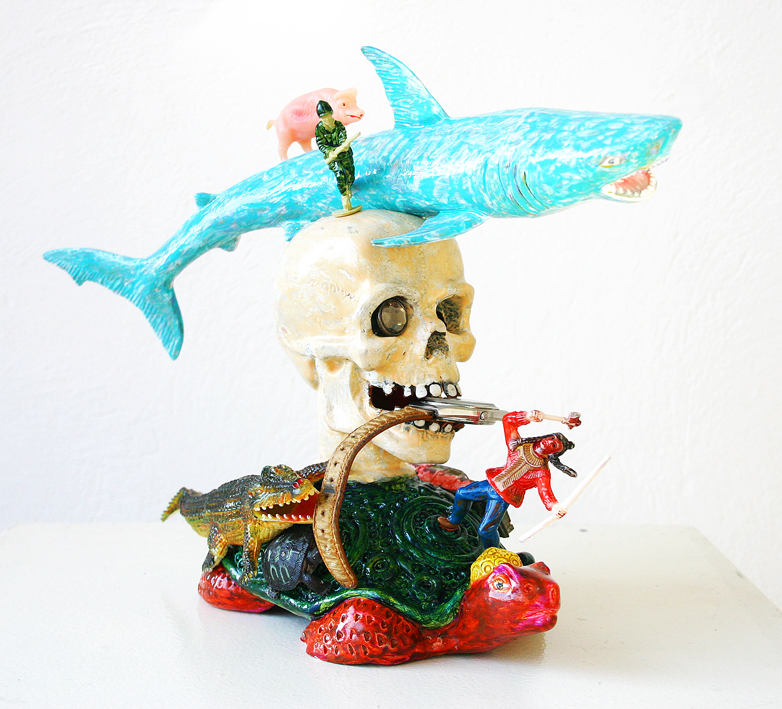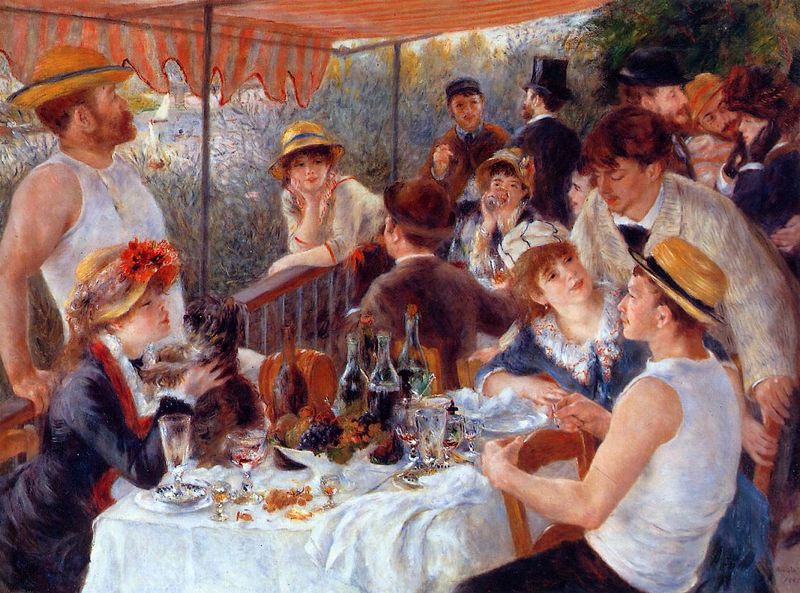
modern communication (illustration for this post, own work, 2014, 10 x 15 cm, click on the image for an enlargement)
i've been reading on art, and also about specific artists... and i'm very tired of all the yada-yada that surrounds art. 'art is the new religion' is the often heard catchphrase, very true unfortunately. often the inanity of seemingly-deep-but-oh-so-shallow `justifications' why the art which is presented to us is so very special makes me laugh and cry at the same time.
which is why i would like to keep this post short. the drawing above explains my feelings on social media, facebook, smartphones etc. instead of interacting directly with the people around us, we are all glued to some screen, together alone... in this half-virtual world, facebook / google-plus and the likes serve as broadcasting media for our own thoughts / experiences / feelings / ... as a result, to me it appears as if everyone is sending sending sending out messages, at a speed which makes real interaction difficult (or so it appears to me).
i do not like facebook, nor google-plus, and i really hesitate to add my broadcasts to these social media. it is a bit of a paradox, you could say, since i do broadcast all these things on my blogs. the difference to me is that my blogs don't send anyone notifications, they do not compel anyone to look, they are there for anyone interested but they do not impose themselves.
this leads me to admit that i am in my core a shy person, and i dislike to claim attention. i do not like to shout from the rooftops that my art is excellent (although i do believe this to be the case), and i dislike to spend energy on creating yada-yada buzz around my art. these character traits practically guarantee that i will not become a `successful' artist in the economical / social sense... but they also enable me to focus on what is essential to my art, and to pursue my search with little compromise to the craziness of contemporary art.
in my opinion, much of our modern communication is fleeting, and inconsequential in terms of content (not in social terms, e.g. texting has been compared to the grooming of primates). so what happens to `slow' content? it gets drowned out, i believe.
extraneous work for an artist in this respect: to tailor a combination of art and communication, such that people are enticed to take notice of the art and the artist.
for this, in my not so humble opinion, a certain shallowness is almost prerequisite. if a message has real content, needing time to be digested, it will certainly be ignored. my character traits are such that i value content, and have little patience with the art of distorting such content into sound bites for a not-too-interested public. however, in order to gain some recognition, i could and perhaps should consider hiring an agent to take care of the extraneous work of social media, networking etc.



















